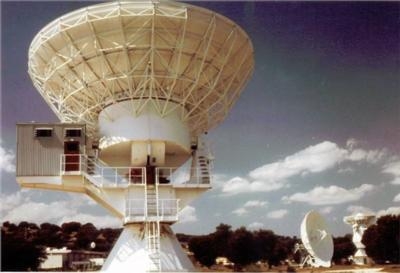Spain And Portugal Will Take Over Satellite Tracking For Multiple Customers
As part of ESA’s strategy to foster commercial competitiveness in Europe while focusing on its core aims, the agency has transferred ownership of several ground tracking stations for reuse by external organizations.

By the end of 2017, ESA will have transferred three stations to national organisations in Spain and Portugal, who will take over the provision of satellite tracking services to a wide variety of commercial customers. The three stations involved in the transfer are all equipped with 15 m-diameter dish antennas, suitable for supporting near-Earth missions, and are located in Spain, at Maspalomas and at ESA’s space astronomy centre near Madrid, and in Perth, Western Australia.
The new operators will be able to use the stations to offer tracking services on a commercial basis to customers worldwide, which also includes ESA, leaving the Agency free to focus on meeting the demanding technical requirements of its deep-space stations, in Spain, Argentina and Australia, and on operation of a select group of four other stations.
“The handover increases commercial capabilities and capacity in Europe, not only to the benefit of ESA but also for commercial partners,” says Yves Doat, Head of Ground Facilities Infrastructure at ESA’s mission control centre, Darmstadt, Germany.
“ESA will continue developing the new technologies needed for future communication, including very high data-rate optical communication and networking with exploration partners at the Moon, Mars and other deep-space destinations. This approach maintains and consolidates the Agency’s future near-Earth communications through commercial support.”
The handover of the Perth station was notable. The station’s frequency licence was withdrawn by the national telecoms regulator in 2015, and the station could no longer operate where it was. After being decommissioned, ESA was faced with the not insignificant cost of tearing it down and disposing of the structure and technical equipment.
“Instead, the government of Portugal made a bid for the station and, following a cost-sharing agreement for dismantling and transportation, it was shipped to Santa Maria island, in the Azores, where it is being recommissioned and placed back into service by 2018,” says Yves.
In contrast, the existing antennas at Maspalomas, Canary Islands, and near Madrid will be taken over in their current locations to be operated by Spain’s National Institute of Aerospace Technology (INTA). The Madrid antenna will be refurbished and restart operations in 2018 under a new licence.
Since September 2017, Maspalomas station has continued operating under its new owner, and has already been used to support ESA’s Cluster mission as one of its first cornerstone customers. Maspalomas station in Spain is part of ESA's global Estrack ground station network.
“Through more than three decades of service, the three stations supported some of Europe’s most important Earth, science and human missions, as well as the launchers lifting off from Kourou,” says Lionel Hernandez, former Madrid station manager.
“It is fitting that they will continue to serve a wide and active customer base, supporting spaceflight operators across Europe.”
(Image provided with ESA news release)
 Aero-News: Quote of the Day (12.18.25)
Aero-News: Quote of the Day (12.18.25) Classic Aero-TV: Viking Twin Otter 400--Bringing the DHC-6 Back Into Production
Classic Aero-TV: Viking Twin Otter 400--Bringing the DHC-6 Back Into Production NTSB Final Report: Rans Employee Flying Club Rans S-6ES Coyote II
NTSB Final Report: Rans Employee Flying Club Rans S-6ES Coyote II ANN FAQ: Submit a News Story!
ANN FAQ: Submit a News Story! ANN's Daily Aero-Term (12.18.25): Braking Action Advisories
ANN's Daily Aero-Term (12.18.25): Braking Action Advisories



